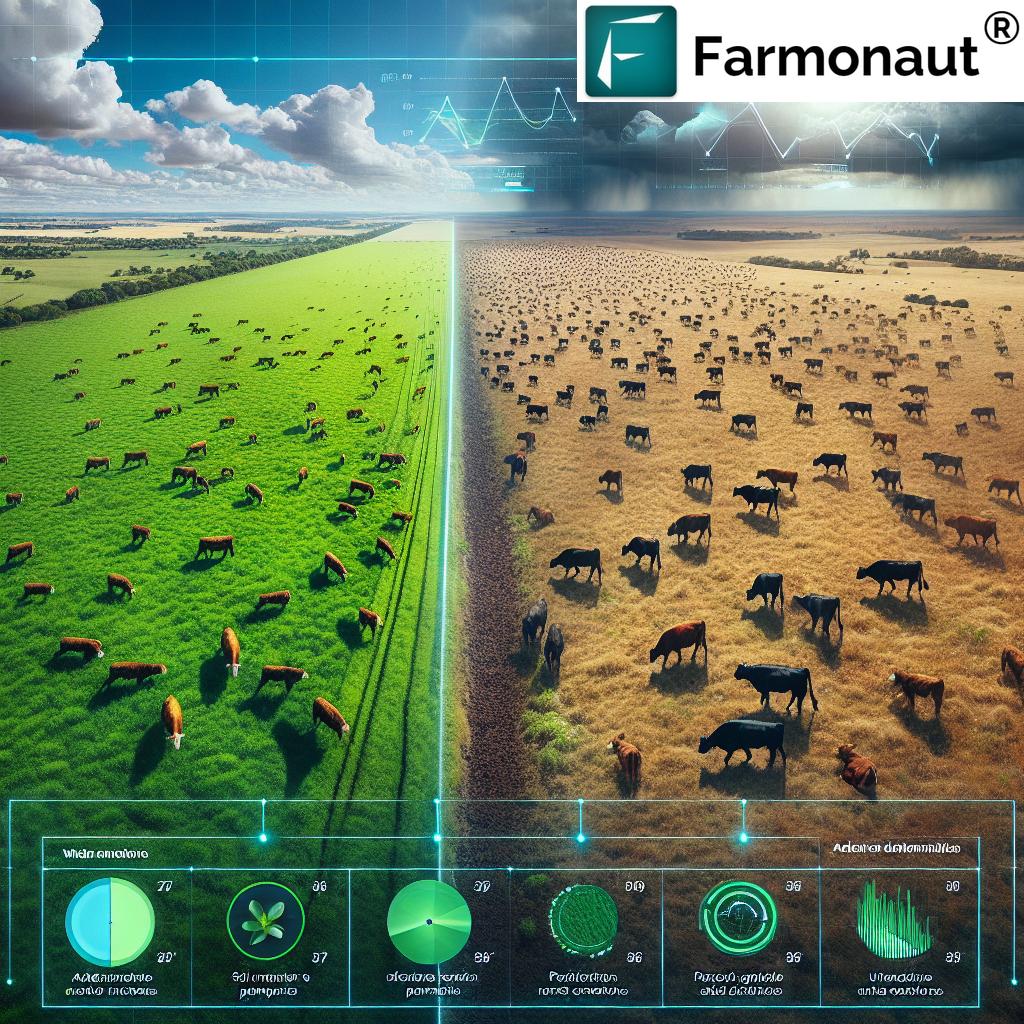Bloodgood Japanese Maple Tree for Sale | Red Maple Bush
“One mature Bloodgood Japanese Maple can support over 30 insect species, enhancing urban biodiversity in sustainable landscapes.”
“Planting Bloodgood Japanese Maples may increase local soil organic matter by up to 15% within five years.”
Introduction: The Bloodgood Japanese Maple in 2025
Sustainable forestry and landscaping remain top priorities as we approach 2026 and beyond. The Bloodgood Japanese Maple (Acer palmatum ‘Bloodgood’) stands out as a premier choice for those looking to enhance their urban environments, gardens, and public green spaces. Renowned for its deep red foliage, elegant form, and remarkable adaptability, the Bloodgood maple continues to maintain its prominent place in horticultural and ecological management practices worldwide, especially in temperate climates.
From private gardens to urban forestry projects, Bloodgood Japanese Maple is acclaimed not only for its aesthetic appeal but also for its ability to promote biodiversity, improve soil quality, and provide essential shade and microclimate regulation. In this blog post, we will explore why the Bloodgood Japanese Maple tree remains a cornerstone species for sustainable landscaping and agroforestry systems in 2025, delving into its botanical features, ecological roles, sustainable management practices, and what makes it such a valuable asset in urban infrastructure and beyond.
Botanical Features and Growth Characteristics of Bloodgood Japanese Maple
What Makes the Bloodgood Japanese Maple Distinct?
The Bloodgood Japanese Maple, classified botanically as Acer palmatum ‘Bloodgood’, is celebrated for its vibrant features and easy integration into various landscaping applications:
- Deciduous nature: Drops its leaves in fall, boasting a spectacular transition from deep red to scarlet.
- Native origin: Native to Japan, but now widely cultivated globally.
- Striking red foliage: Leaves retain a deep burgundy or wine-red color throughout the growing season, intensifying to a scarlet hue in autumn.
- Elegant, vase-shaped form: With gracefully arching branches, this manageable tree reaches 15-20 feet in height and spread, making it ideal for both expansive and compact settings.
- Moderate canopy: Provides balanced shade without overwhelming surrounding plant life, aiding in microclimate control and understory crop protection.
- Hardy and adaptable: Thrives in a variety of soil conditions, particularly in well-drained, slightly acidic soils.
Growth Patterns and Sustainability
Typically, Bloodgood Japanese Maples grow 1–2 feet per year under the right conditions. Their manageable size and moderate growth rate make ongoing management and pruning straightforward, while their root systems remain relatively non-invasive—helpful for planting near patios, walkways, or in mixed-species urban plantations.
- Height at maturity: 15–20 feet
- Spread at maturity: Up to 15 feet
- Root system: Fibrous, aiding in soil stabilization and erosion prevention
- Lifespan: Can live well over 50 years with proper care
Ecological and Landscape Benefits of Bloodgood Japanese Maple
Enhancing Urban Biodiversity and Ecosystems
The Bloodgood Japanese Maple not only captivates attention with its color and elegant form but also plays a crucial ecological role in sustainable landscapes:
- Biodiversity: Supports over 30 insect species, including pollinators, which help increase local ecosystem health.
- Bird habitat: Provides nesting sites and shelter for various bird species in urban and rural settings.
- Soil enrichment: Yearly leaf fall contributes to increased organic matter in soil—boosting microbial activity and fertility.
- Carbon sequestration: As a moderate-sized tree, it contributes meaningfully to capturing CO2 from the atmosphere.
- Urban cooling: The moderate but effective canopy reduces heat island effect, providing shade and cooler microclimates for understory plants, buildings, and people.
Soil Health, Erosion Prevention & Sustainable Practices
A Bloodgood Japanese Maple bush acts as a natural soil stabilizer. Its fibrous root network holds soil in place, especially important for sloped or hilly terrains where erosion prevention is critical. Annual leaf drop builds up organic material, improving soil structure and water-holding capacity—crucial for sustainable agriculture and urban forestry alike.
- Enhanced soil organic matter (SOM): May increase SOM by up to 15% within five years.
- Windbreak function: Acts as a barrier for wind, protecting understory crops and urban spaces.
- Microclimate regulation: Maintains moderate light and temperature conditions for sensitive plants and organisms.
Comparison Table: Ecological and Landscape Benefits of Bloodgood Japanese Maple vs. Common Urban Trees
| Tree Species | Estimated Annual Carbon Sequestration (kg/year) | Biodiversity Support (Pollinators/Bird Species Attracted) |
Water Requirement | Urban Cooling Effect (Shade at Maturity, m²) |
Soil Adaptability | Native/Non-Native Status |
|---|---|---|---|---|---|---|
| Bloodgood Japanese Maple (Acer palmatum ‘Bloodgood’) | ~17–24 | 30+ insect/pollinator species; 10+ bird species | Moderate | 28–36 | High (prefers well-drained, slightly acidic soils) | Non-Native (Japan) |
| Red Maple (Acer rubrum) | ~27–35 | 40+ insect species; 15+ bird species | Moderate | 40+ | High (adapts to varied soils) | Native (North America) |
| London Plane (Platanus × acerifolia) | ~40–60 | 30+ insect/bird | Moderate–High | 50+ | Adaptable | Non-Native (Hybrid) |
| Ginkgo (Ginkgo biloba) | ~19–29 | 20+ insect/bird | Low–Moderate | 20–28 | Prefers well-drained soils | Non-Native (Asia) |
| White Oak (Quercus alba) | ~60–80 | 90+ insect species; 30+ bird species | Moderate–High | 60+ | High | Native (North America) |
Cultivation, Agroforestry, and Soil Management
Bloodgood Japanese Maple in Agroforestry Systems
The integration of Japanese maples, and especially the Bloodgood variety, into modern agroforestry systems is on the rise in both urban and rural environments. Their manageable size, moderate canopy, and shade-providing attributes are perfectly suited to multifunctional agricultural landscapes:
- Shade for understory crops: Moderate canopy can protect shade-loving or sensitive crops against harsh sunlight and wind.
- Microclimate improvement: Reduces farm heat stress without excessive water competition.
- Soil conservation: Prevents erosion on hilly/sloped lands, adding stability and fertility through seasonal leaf litter.
- Biodiversity corridors: Serves as habitat and wildlife corridor for pollinators and birds, enhancing ecosystem function within farms.
- Low maintenance: Requires less attention and chemical intervention compared to other ornamental species—important for sustainable land management.
Soil Preparation and Best Practices
- Preferred conditions: Best in well-drained, slightly acidic soils enriched with organic matter.
- Mulching: A regular layer of organic mulch aids moisture retention and soil health.
- Irrigation: Needs consistent but not excessive watering, especially during the first 2–3 years after planting.
- Wind protection: Prioritize planting locations that shelter young trees from harsh winds and late spring frosts.
- Spacing: Allow for adequate spread (15 ft) at maturity to promote longevity and air flow.
Bloodgood Japanese Maple for Erosion Control and Soil Improvement
Because the Bloodgood’s roots are fibrous and non-aggressive, they are a cornerstone for slope stabilization projects and mixed plantings. The leaves add organic matter, promoting soil microbial diversity and nutrient cycling. Planting Bloodgood Japanese Maples can play a critical role in reforestation, riparian buffer strips, and erosion-prone areas.
Real-Time Monitoring & Advisory for Landowners
For enhanced management of planted Bloodgood Japanese Maples and other agroforestry crops, landowners can leverage satellite-based crop health monitoring platforms, such as Farmonaut’s Large Scale Farm Management Tools. These platforms utilize remote sensing and AI-driven analytics for:
- Tracking vegetation health and canopy cover for maples and other trees
- Obtaining detailed soil condition reports and climate alerts
- Promoting early intervention against disease and drought stress
Role in Urban Infrastructure & Sustainable Landscaping
Bloodgood Japanese Maple: The Urban Forestry Solution
In 2025 and looking toward 2026, urban green infrastructure embraces moderate-sized, adaptable trees like the Bloodgood Japanese Maple. These trees are increasingly planted along streets, parks, campuses, courtyards, and residential landscapes.
- Urban canopy: Moderate spread means less conflict with utility lines and infrastructure.
- Low maintenance: Disease-resistant and pollution-tolerant—ideal for busy urban environments.
- Air purification: Bloodgood maples filter airborne pollutants, improving overall air quality.
- Heat island mitigation: Their efficient cooling effect makes them a favorite for urban warming reduction projects.
- Resilience: Can thrive under partial shade or direct sunlight, flexible for various urban planning projects.
Bloodgood Japanese Maple in Green Public Spaces
Bloodgood Japanese Maples are frequently the focal point in ornamental landscapes thanks to their distinct deep red foliage and visually appealing branching patterns. They can be mass-planted, used in mixed shrub borders, or as accent trees in:
- Urban parks and street medians
- Community gardens
- Corporate and educational campus landscaping
- Rooftop gardens—thanks to their moderate root systems
- Memorial or heritage planting projects
- Private residential gardens looking for year-round color
Enhancing Biodiversity and Promoting Healthy Systems
Japanese Maple Bush for Biodiversity and Pollinator Support
A Bloodgood Japanese Maple bush is more than an ornamental accent—it is an ecosystem cornerstone. Unlike monoculture lawns or non-flowering evergreens, Bloodgood maples provide food, shelter, and habitat for:
- Butterflies, bees, and a wide variety of urban pollinator insects
- Songbirds attracted to the dense branching for nesting and perching
- Urban mammals and microfauna, benefiting from leaf litter and soil enrichment
This rich biodiversity provides a buffer against pest outbreaks and supports healthy, resilient landscapes. Planting Japanese maples along with other native and non-invasive ornamentals builds a multi-layered, balanced urban ecosystem.
Sustainable Management Practices for Bloodgood Japanese Maple Trees
Practices for sustainable Bloodgood Japanese Maple tree management include:
- Companion planting: Understory ferns, hostas, or low-growing shrubs complement maples in both appearance and ecological function.
- Seasonal mulching: Every autumn, organic mulch further boosts soil health and moisture retention.
- Pest and disease monitoring: Although Bloodgood maples are naturally resistant, occasional checks ensure long-term health.
- Pruning in late winter: Maintains shape while removing any dead or diseased limbs, supporting healthy growth.
Promoting Biodiversity with Technology
Using Farmonaut’s Carbon Footprinting solutions, landowners can quantify how Bloodgood maple plantings contribute to overall carbon sequestration and local biodiversity metrics through advanced satellite imagery and AI-driven reporting. This technology can inform green infrastructure grants and municipal sustainability programs by providing credible, data-driven evidence of landscape improvements.
Market Trends and Japanese Maple Tree for Sale in 2025
Global Demand and Nursery Practices
As cities worldwide prioritize green infrastructure and climate adaptation, the market for Japanese maple trees for sale—especially the Bloodgood variety—remains on a steady upward trend. Specialized nurseries report consistent demand due to the Bloodgood’s:
- Striking aesthetic for homeowners and designers
- Reliability and low maintenance for municipalities
- High survival rates and disease resistance in various conditions
In 2025 and beyond, the use of online marketplaces and direct-to-consumer sales from nurseries specializing in Japanese maple bushes and trees has made acquisition easier than ever. Cultivators are using advanced propagation techniques, ensuring that each Bloodgood Japanese Maple tree for sale is robust, healthy, and primed for successful establishment.
Where Bloodgood Japanese Maple Trees Thrive
Bloodgood Japanese Maples thrive in:
- Temperate climates with moderate rainfall
- Zones 5–8 (some tolerance in zones 4 and 9 with adequate care)
- Urban, suburban, and rural landscapes alike
- Settings aiming for bold visual impact and improved ecosystem services
They remain prized by landscapers, municipalities, and homeowners across North America, Europe, and East Asia—especially where climate resilience and ecological value are prioritized.
Farmonaut: Sustainable Management & Technology Solutions for Maple Plantings
At Farmonaut, we empower landowners, businesses, and governments to manage and monitor Bloodgood maple plantings using advanced satellite imagery, real-time monitoring, and AI-based insights. Our Crop Plantation & Forest Advisory platform is designed to help users:
- Plan optimal maple tree planting layouts for biodiversity and soil conservation
- Monitor canopy growth and soil condition with multispectral imagery
- Access resource management tools and AI-based advisory tailored for urban green infrastructure and agroforestry projects
Our Satellite API and Developer Docs enable integration of these insights into custom management systems for governments, businesses, and large-scale landscape projects.
Fleet Management Tools also streamline logistics for planting, nursery transport, and maintenance of Bloodgood Japanese Maples, reducing costs and ensuring efficient resource allocation across extensive landscaping projects.
By combining technology, satellite-derived data, and environmental stewardship, Farmonaut’s solutions drive sustainability, transparency, and long-term success in Japanese maple landscape management.
For financing large-scale ecological planting projects, our Crop Loan and Insurance Verification module assists users in qualifying for green infrastructure loans and insurance coverage, leveraging satellite-based verification for accurate reporting and fraud reduction.
Planting and Care Guide for Bloodgood Japanese Maple Bush
Step-by-Step Planting Guide
- Site selection: Choose an area offering partial shade for best color retention, sheltered from harsh winds.
- Soil preparation: Dig a hole about twice as wide as the root ball and the same depth. Amend native soil with compost.
- Handling the root ball: Gently spread out roots; prune any circling roots to encourage outward growth.
- Planting: Place the tree so that the top of the root ball sits level with the ground. Backfill with soil, compressing gently.
- Watering: Water thoroughly after planting. Keep soil consistently moist but not waterlogged for the first two growing seasons.
- Mulching: Apply 2–3 inches of organic mulch to maintain soil moisture and temperature.
- Staking (if necessary): Young trees exposed to high winds may require staking in the first year.
Bloodgood Japanese Maple Bush: Ongoing Care Tips
- Pruning: Lightly prune after leaf drop (winter) to remove deadwood and shape. Avoid excessive pruning in active seasons.
- Water management: Bloodgood Japanese Maples are moderately drought-tolerant after establishment, but extended dry periods require supplemental irrigation.
- Fertilizing: Annually use a balanced, slow-release fertilizer in early spring if necessary—avoid over-fertilizing, which can weaken root systems.
- Pest/disease watch: Inspect seasonally for aphids, scale insects, or fungal issues. Most Bloodgood maples remain robust with minimal intervention.
- Winter protection: Young trees benefit from mulch and burlap wraps in harsh climates to prevent frost damage.
Layering Bloodgood Maples with Companion Plantings
Planting Bloodgood maples among ferns, hostas, astilbe, and other woodland perennials creates a layered garden ecosystem that maximizes shade, soil fertility, and aesthetic appeal. Mixed planting supports year-round biodiversity and color.
FAQ: Bloodgood Japanese Maple in 2025 and Beyond
- What makes the Bloodgood Japanese Maple ideal for sustainable landscapes?
Bloodgood Japanese Maples offer a blend of striking visual appeal, moderate growth size, low maintenance requirements, and high ecological value. Their ability to support pollinators, enrich soil, and sequester carbon makes them a sustainable choice for all landscape scales.
- How do Bloodgood Japanese Maples improve soil health?
Through regular leaf drop and organic matter decomposition, Bloodgood maples can increase local soil organic content by up to 15% over five years—boosting microbial activity, water retention, and overall fertility.
- Are these trees suitable for small residential gardens?
Yes, Bloodgood Japanese Maples are a manageable size (15–20 ft. mature height/spread) and suitable for compact spaces, patios, and urban courtyards.
- Where can I find Bloodgood Japanese Maple trees for sale in 2025?
Local and specialist nurseries, as well as online plant retailers, offer Bloodgood Japanese Maple bushes and trees for sale. Always seek healthy, disease-free saplings from reputable sources.
- Can I monitor my Bloodgood Maple plantings remotely?
Absolutely. Platforms like Farmonaut provide satellite-based insights, real-time canopy monitoring, and AI-driven advisory for optimal maple management—ideal for both individual landowners and professional landscapers.
- How can Bloodgood Japanese Maples contribute to urban climate adaptation projects?
Their moderate canopy, drought tolerance, and air purification abilities make them valuable assets for urban heat island mitigation and resilient green infrastructure planning.
- What’s the best season for planting?
Bloodgood Japanese Maples are best planted in early spring or early fall, allowing roots to establish before summer heat or winter frost.
Farmonaut Subscriptions: Empowering Landowners with Satellite Technology
Whether you’re overseeing large-scale Bloodgood maple projects or a single elegant Japanese red maple tree in your garden, Farmonaut’s subscription platform enables real-time, affordable satellite and AI-based monitoring for any plot size or budget. Explore customizable packages and boost your landscape’s sustainability and productivity:
Conclusion: A Premier Choice for Sustainable Landscape and Urban Forestry in 2025–2026
The Bloodgood Japanese Maple (Acer palmatum ‘Bloodgood’) continues to hold its place as a premier tree for sustainable landscaping and urban forestry well into 2025 and beyond. With their remarkable adaptability, ecological value, and enduring aesthetic beauty, Bloodgood Japanese Maples are more than an ornamental feature—they are an investment in a thriving, biodiverse, and climate-resilient landscape.
For property owners, municipalities, and environmental stewards, Bloodgood maple trees represent an ideal solution to modern challenges in urban green infrastructure, agroforestry systems, and sustainable land management. Combining nature’s elegance with advanced monitoring through Farmonaut’s technology ensures your landscape remains vibrant, productive, and resilient for years to come.















